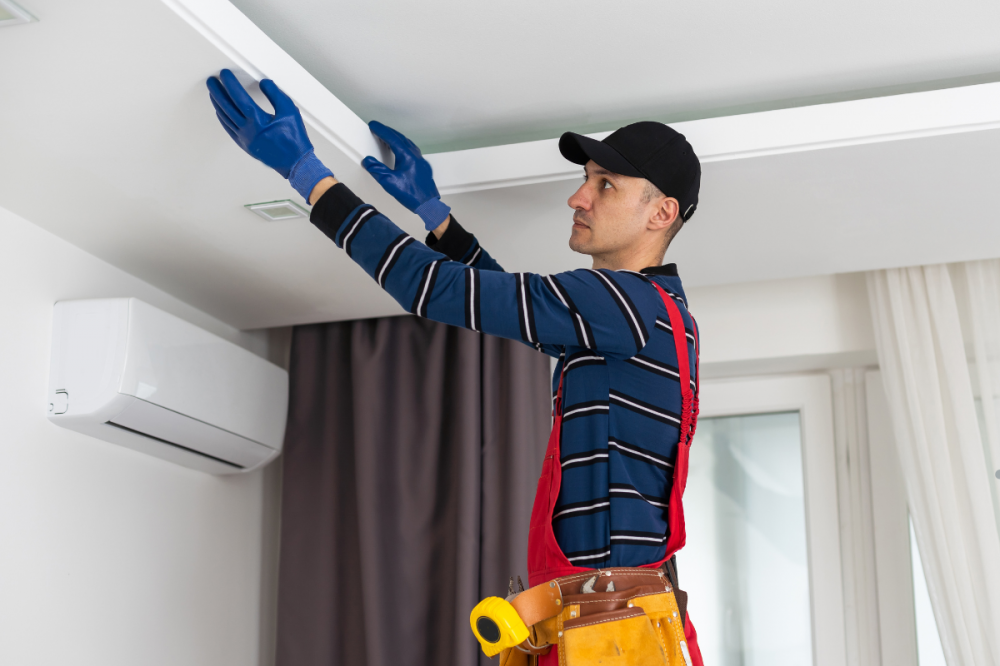|
Insulation and HVAC Efficiency: What’s the Connection? | ||||
|
IntroductionThe efficiency of your HVAC system depends on more than just the quality of the equipment—it also heavily relies on how well your home is insulated. Without proper insulation, even the most advanced HVAC systems will struggle to maintain a comfortable temperature, resulting in higher energy bills and unnecessary wear on your heating and cooling equipment.
In this article, we’ll dive into the link between insulation and HVAC efficiency, the benefits of proper insulation, and how you can optimize both to reduce energy costs and improve comfort. 1. Why Insulation Is Essential for HVAC EfficiencyInsulation plays a critical role in controlling the transfer of heat between the interior and exterior of your home. It helps to maintain a consistent indoor temperature by reducing heat loss during the winter and limiting heat gain in the summer. Without sufficient insulation, conditioned air escapes through the walls, attic, and other parts of your home, forcing your HVAC system to work overtime to maintain a comfortable temperature. This additional strain not only leads to higher energy consumption but also shortens the lifespan of your HVAC equipment. Proper insulation ensures that your HVAC system operates more efficiently, reducing energy usage and extending the life of your system. 2. How Insulation Improves Energy EfficiencyGood insulation enhances HVAC efficiency in several ways: a. Prevents Heat Loss and GainDuring the winter, insulation keeps warm air inside your home, while in the summer, it prevents hot air from entering. By minimizing the amount of heat that escapes or enters your home, your HVAC system doesn’t have to work as hard to maintain the desired temperature. b. Reduces Energy CostsWhen your home is well-insulated, your HVAC system doesn’t need to run as frequently, which leads to lower energy consumption and reduced utility bills. Insulation can result in significant energy savings, especially in extreme climates where heating and cooling costs are high. c. Promotes Consistent Indoor TemperaturesInsulation helps to eliminate temperature fluctuations and hot or cold spots in your home. With consistent temperatures throughout your living space, your HVAC system can run more efficiently, delivering uniform comfort without overexertion. 3. Signs That Your Insulation Is Affecting HVAC PerformanceIf your HVAC system is working harder than necessary or if your energy bills are higher than expected, your insulation may not be performing effectively. Here are some common signs that your insulation is impacting your HVAC system’s efficiency: a. Uneven TemperaturesAre some rooms significantly hotter or colder than others? This could indicate that certain parts of your home lack proper insulation, causing uneven distribution of conditioned air. b. Drafts Around Doors and WindowsDrafts are a sign of air leaks, which can significantly reduce the efficiency of both your insulation and HVAC system. Sealing these leaks can improve comfort and reduce energy waste. c. High Energy BillsIf your energy bills are rising despite moderate HVAC usage, it could be a sign that your insulation is not providing adequate thermal protection. d. Constant HVAC CyclingFrequent cycling of your HVAC system may indicate that it’s struggling to maintain consistent temperatures due to poor insulation. 4. Top Insulation Options for Boosting HVAC EfficiencyChoosing the right insulation is key to improving your HVAC system’s performance. Below are some of the best insulation materials for maximizing energy efficiency: a. Spray Foam InsulationSpray foam insulation is one of the most effective materials for creating an airtight seal and preventing air leaks. It expands to fill gaps and cracks, which significantly reduces heat loss and improves HVAC efficiency. b. Blown-In InsulationBlown-in insulation is ideal for hard-to-reach areas such as attics and wall cavities. It provides thorough coverage, ensuring that your home is properly insulated and reducing the workload on your HVAC system. c. Fiberglass Batt InsulationFiberglass batt insulation is a cost-effective and widely used option for insulating walls, floors, and ceilings. It provides good thermal resistance, helping your HVAC system maintain consistent temperatures. d. Rigid Foam InsulationRigid foam insulation is highly efficient and provides excellent thermal resistance. It’s commonly used for insulating basements, foundations, and exterior walls, contributing to reduced energy consumption. 5. Tips for Maximizing HVAC Efficiency Beyond InsulationWhile upgrading your insulation is an essential step to improving HVAC efficiency, there are other measures you can take to ensure your system operates at peak performance: a. Seal Air LeaksGaps around windows, doors, and other areas of your home can let conditioned air escape. Sealing these leaks with caulking or weatherstripping can help improve HVAC efficiency. b. Optimize VentilationProper ventilation is crucial for maintaining HVAC efficiency. Ensure that your home’s ventilation system is working correctly to promote airflow and prevent your HVAC system from overworking. c. Schedule Regular HVAC MaintenanceRoutine maintenance, such as replacing air filters and cleaning ducts, can keep your HVAC system running smoothly and prevent energy waste. d. Upgrade to a Programmable ThermostatA programmable or smart thermostat allows you to set your HVAC system to run more efficiently, especially when you’re not home. This reduces unnecessary energy usage and helps lower your utility bills. 6. Conclusion: Insulation and HVAC Efficiency Go Hand in HandThe connection between insulation and HVAC efficiency is undeniable. Proper insulation reduces the strain on your HVAC system, lowers energy costs, and enhances overall comfort. If you want to maximize your home’s energy efficiency, investing in high-quality insulation and maintaining your HVAC system are crucial steps. By addressing both insulation and HVAC performance, you can create a more energy-efficient, cost-effective, and comfortable home. | |||
|
 |
